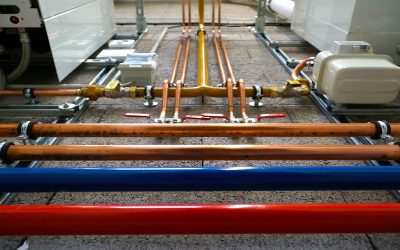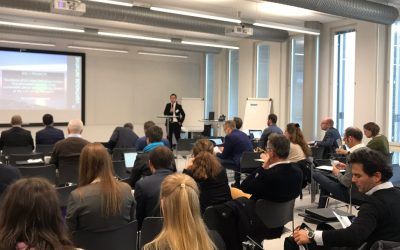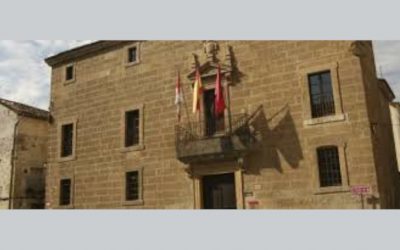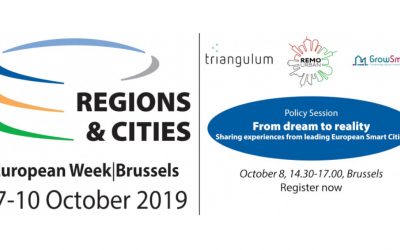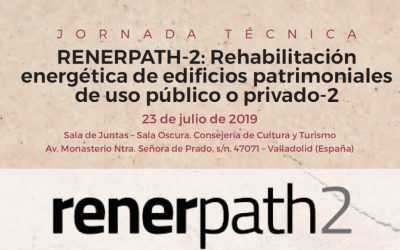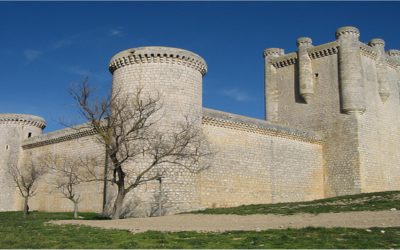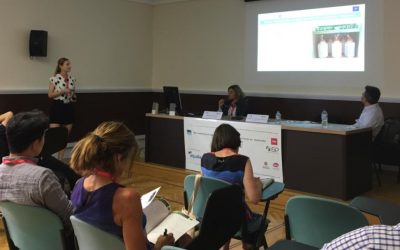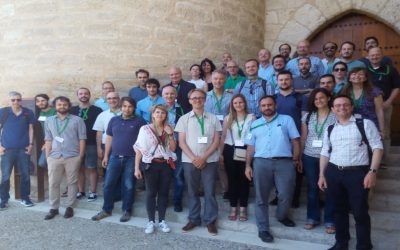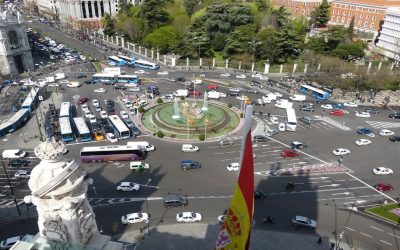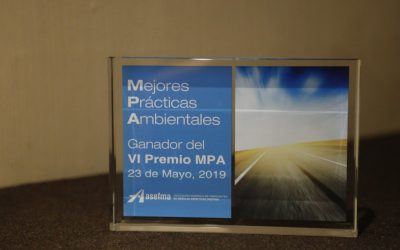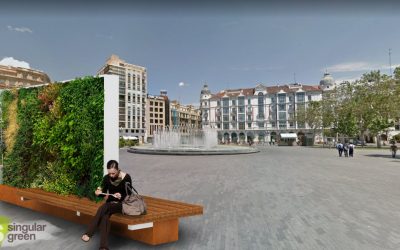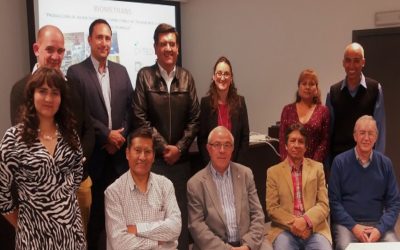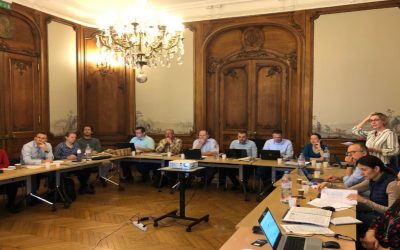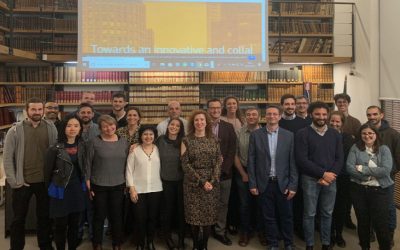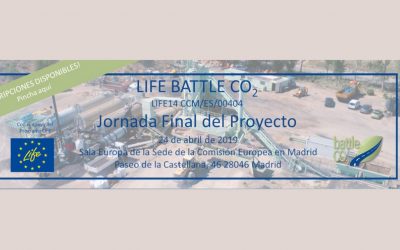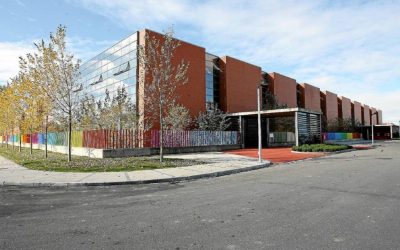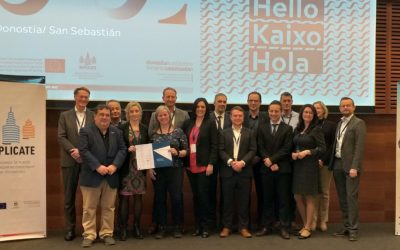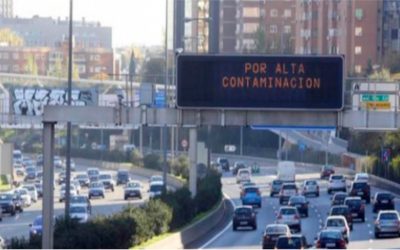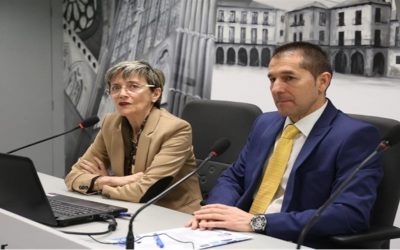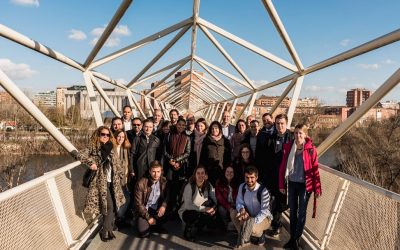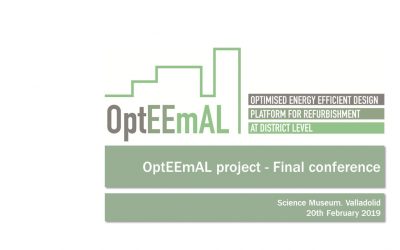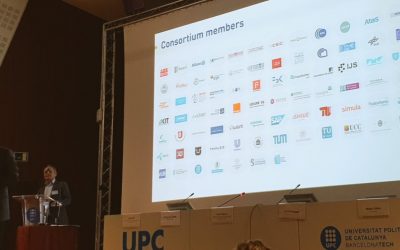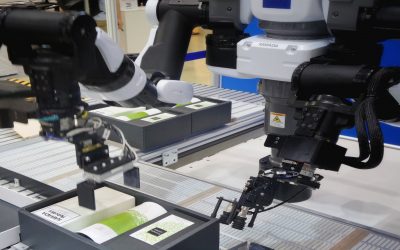CARTIF PROJECTS
INFIT
Keeping the safety of the entire rail network
Description
Keeping the safety of the entire rail network and, above all, critical elements such as tunnels, becomes a fundamental and priority objective for the Strategic Plan of Infrastructure and Transport (PEIT). For this, the potential causes of problems must be detected, usually cracks and fissures, and their growth must be controlled. Current evaluation systems are slow, subjective and unreliable.
In INFIT, automatic data capture systems have been developed to obtain an accurate and objective image of the tunnel surface. New tools have been developed that are capable of detecting, classifying and monitoring the cracks and fissures that may appear, as well as a system for the prevention of potential risks that may affect the integrity of tunnels, users and workers.
Objectives
- The development of a new railway tunnel inspection system based on the integration of image acquisition devices and active lighting equipment capable of highlighting fissures or cracks.
- The development of detection algorithms to facilitate the location and measurement of size and orientation of cracks and fissures that may jeopardize the integrity of the tunnel.
- The implementation of monitoring tools that allow the evaluation of the growth of defects detected through analysis and comparison of successive periodic inspections.
Actions
- Analysis and specification of the technical requirements of the tools for inspection, detection and tracking of cracks and fissures.
- Development of a crack inspection prototype, designing its architecture, synchronizing the acquisition devices and manufacturing the platform.
- Technologies and methods of detection, measurement and tracking of fissures using image processing algorithms.
- Integration, prototype validation and demonstration of the complete system in real environments.
Expected results
- An inspection system of 100% of the surface of the tunnel through the use of linear cameras with a resolution per pixel between 1- 0.25 mm2.
- Crack detection algorithms for the location and determination of size and position of cracks and fissures.
- Tracking tool that automatically, accurately and objectively evaluates the growth of the cracks detected by algorithms for comparing successive inspections and automatically generates monitoring reports.
Partners:

INNPACTO 2012
INFIT: IPT-2012-0980-370000

Presupuesto total: 620.006,75 €
Contribución 206.289,70 €
Duración: 24 meses: Octubre 2012 – Octubre 2014

Responsible
Roberto Medina Aparicio
Divison of Industrial and Digital Systems
Networking
Cultural and natural heritage projects:
REWARDHeat
The overall objective of REWARDHeat is to demonstrate a new generation of low-temperature district heating and cooling (DHC) networks, which will be able to recover renewable (RES) and residual (WH) heat available at low temperatures.
CARTIF participates in the Life Landfill Biofuel project, which will generate fuel from landfill biogas
The European Commission has approved the development of the European Life Landfill Biofuel project, which will transform the biogas from landfill into biomethane. The ultimate objective of this initiative, which has the participation of CARTIF, is to demonstrate the...
The REMOURBAN project of CARTIF, an example of sustainable mobility in Valladolid during SEM19
The City of Valladolid is actively participating in the European Mobility Week and all thanks to the European REMOURBAN project, an initiative funded by the EU and coordinated by the CARTIF Technology Centre, which has boosted the use of electric vehicles in...
The mySMARTLife project, led by CARTIF, holds a ‘technological breakfast’ in Helsinki
On the occasion of the 6th follow-up meeting of the initiative, the mySMARTLife project, with CARTIF at the helm, has organized a ‘technological breakfast’ on Friday, September 20, 2019 in the Finnish city of Helsinki, where the research teams of the three cities...
LIFE myBUILDINGisGREEN gives a conference on architectural solutions based on nature
Within the framework of the LIFE myBUILDINGisGREEN project, of which CARTIF is a participating partner, the Provincial Counsil of Badajoz will give a conference on November 13 in the city of Badajoz about the impact and functionality of Nature Based Solutions (NBS) as...
Ciudad Rodrigo hosts the final event of the RENERPATH 2 project, coordinated by CARTIF
On September 18, the RENERPATH 2 project, led by the CARTIF Technology Centre, will offer an explanatory event on the energy rehabilitation of heritage buildings at The House of Culture of Ciudad Rodrigo. RENERPATH 2, which is in its final phase, aims to develop a...
The Rezbuild project website, nominated for the .EU Web Awards
The REZBUILD international project website, in which the CARTIF Technology Centre participates, has been nominated for the .EU Web Awards 2019, a distinction granted by the EURid platform to recognize the best websites within the range of .eu or .ею extensions....
The first three lighthouse projects will present its final results in Brussels
On October 8, during the European Week of Regions and Cities in Brussels, the first three projects in the Horizon2020 funded Smart City Lighthouse Programme, REMOURBAN, Triangulum and GrowSmarter, will present their key findings at a joint event in Brussels, Belgium....
Valladolid hosts an event of the Spanish-Portuguese project RENERPATH 2, led by CARTIF
Next Tuesday, July 23 the Ministry of Culture and Tourism of Valladolid will host a technical conference of the international project RENERPATH 2. This initiative, coordinated by the CARTIF Technology Center and developed thanks to the collaboration between research...
Transforming Transport
Transforming Transport project demonstrated, in a realistic, measurable an replicable wway the transformations that Big Data can bring to the mobility and logistics market. TT adress 13 pilots in 7 domains.
BRESAER
BRESAER is a demonstrative project whose objective is the development of a cost-effective, adaptable and industrialized envelope solution for the rnovation of buildings.
The INCEPTION Project, in its final stretch
Next Monday, July 8, CARTIF researchers Pedro Martín Lerones and David Olmedo will present, in the final review of the INCEPTION project held in Zagreb (Croatia), the progress made by the Valladolid technology centre within the framework of this initiative. CARTIF is...
CARTIF takes part in IWAlgae 2019 in Valladolid with its project LIFE ALGAECAN
On July 1 and 2, the University of Valladolid (Uva) hosted the IWAlgae 2019 congress, an event that included the II Congress of the International Water Association on Algal Technologies for the Treatment of Wastewater and Resource Recovery and the XII Congress of the...
LIFE LANDFILL BIOFUEL
The aim of LIFE LANDFILL BIOFUEL is to demonstrate the technical performance of a cost effective solution based on the implementation of new exploitation techniques of the waste cells to enhance the biogas production
The University of Valladolid welcomes the beginning of LOCOMOTION project, in which CARTIF takes part
Researchers from twelve institutions met on June 25, 26 and 27 at the University of Valladolid (UVa) to start the European project LOCOMOTION, which aims to improve the simulation tools used as support in the decision making process of political decisions related to...
The REMOURBAN project, coordinated by CARTIF, offers two webinars on June 14 and 19
The international REMOURBAN project, led by CARTIF, will offer to anyone interested the opportunity to discover the progress and achievements of the initiative through two webinars that will take place this June. The first of them, held on the 14th, will explore the...
The latest advances of the LIFE GYSTRA project, in its next conference in Madrid
The LIFE GySTRA project, coordinated by CARTIF, will hold on June 28 in Madrid a seminar on urban environmental policies and the exhaust gases of vehicles, focused on the potential of remote measurement to achieve a significant reduction of harmful emissions in the...
LOCOMOTION
LOCOMOTION will design a set of IAMs that will provide politicians and other stakeholders with assessment tools to analyze the feasibility, effectiveness and costs of the different sustainability policies and strategies.
SunHorizon
The SunHorizon project aims to demonstrate that combining technologies (TPs) such as solar panels and managed heat pumps with a controller with predictive, proactive and self-learning capabilities saves energy.
BIOMOTIVE
The BIOMOTIVE project aims to demonstrate the production of new high-performance biomaterials (thermoplastic polyurethane, foams and fibres) for the automotive sector, with the objective of revolutionising the market.
LIFE Battle CO2 project, led by CARTIF, leaded by CARTIF, award ‘Best Environmental Practices 2019’
Good news for CARTIF. On the occasion of the XIV National Day of ASEFMA, the Spanish Association of Manufacturers of Asphalt Mixtures (ASEFMA) has awarded the LIFE BATTLE CO2 project, coordinated by the technological center from Valladolid, the Best Environmental...
URBAN GreenUP, led by CARTIF, coloured with ‘green’ several emblematic places of Valladolid
The City Council of Valladolid and the URBAN GreenUP project, coordinated by CARTIF, have approved on Wednesday the installation of several mobile gardens distributed throughout the capital city. The agreed green sites are the following: a covering of the marquee of...
The LIFE BATTLE CO2 project, led by CARTIF, finalist for the Best Environmental Practices 2019 Award
The Spanish Association of Manufacturers of Asphalt Mixtures (ASEFMA), through its technical committee, has recognized the LIFE BATTLE CO2 project, coordinated by CARTIF, as one of the four finalists of the sixth edition of the "Best Environmental Practices" Award...
Uruguay hosts an international workshop of the BIOMETRANS project, led by CARTIF
On Wednesday, May 15, Technological Park of the city of Pando (Uruguay) held an international meeting of the BIOMETRANS project, coordinated by CARTIF, on the production of biomethane as a transport fuel from residual lignocellulosic biomass. Researchers from the...
The MUSE GRIDS project, protagonist in an international workshop on local energy communities
The European Horizon 2020 program will offer a workshop on local energy communities on May 15 in Brussels, where four of its projects will be presented: COMPILE, MERLON, STORY and MUSE GRIDS. The latter has the participation of CARTIF. With the title “Local Energy...
ELISE Energy Pilot
The aim of the ELISE action is to promote a coherent and consistent approach to the sharing and reuse of location data across borders and sectors.
SO WHAT
SO WHAT project aims to develop and validate an integrated software for auditing industrial process, planning and simulation of waste heat and cold (WH/C) valorisation systems towards the identification of economically viable scenarios where WH/C and renewable energy sources (RES) cooperate to match local demand.
SocialRES
The SocialRES project seeks to increase scientific knowledge about the non-technological aspects that prevent the adoption of social energy alternatives such as cooperatives, aggregators or crowdfunding platforms.
The EU establishes cooperation for the digitalization of cultural heritage with the INCEPTION project
On April 9, 24 European countries signed a declaration of cooperation to advance in the digitization of cultural heritage. This agreement will involve joint work to make the most appropriate use of state-of-the-art digital technologies in order to face the potential...
Meeting in Paris to evaluate the first phase of the NUTRIMAN project
On April 1 and 2, the Maison des Chambres d'Agriculture in Paris, France, hosted the follow-up meeting of the NUTRIMAN project, of which CARTIF is a participant, on the occasion of the first 6 months of its development. The Assemblée Permanente Des Chambres...
REZBUILD European Project lays foundations of innovative energy efficient demo sites
The consortium partners of REZBUILD have laid the foundations of the three energy efficient demo sites that will be tested during this European Project. This major advance was achieved by setting the processes that will manage the sites in Madrid (Span), Oslo (Norway)...
Final event of the LIFE BATTLE CO2 project, which replaces fossil fuels in the process of manufacturing asphalt mixtures by biomass
Next April 24th, the final event of the LIFE BATTLE CO2 project, led by CARTIF, will be held at the office of the European Commission in Madrid. This initiative has succeeded in replacing 80% of the fossil fuels used in the manufacturing process of the asphalt plant...
ZEOCAT-3D
The ZEOCAT-3D project addresses the conversion of methane, from natural gas and biogas, into aromatic hydrocarbons of high added value and easily transportable
SMART HOSPITAL, nominated for ‘the best LIFE project of 2019’
The LIFE SMART HOSPITAL project has been selected among the 15 finalist projects for ‘the best project of the LIFE program (European Commission) in 2019’ award. This sample of recognition will be presented at the LIFE Awards Ceremony, which will take place in Brussels...
Making City signs the European Lighthouse Projects Manifesto of Smart Cities
Representatives of all European Lighthouse Projects about smart cities met in San Sebastián (Spain) with the aim of signing again a new manifesto of common collaboration, like the previously signed a few months ago, because of the launch of two new projects, Making...
LIFE GYSTRA project, that seeks to reduce the emissions of vehicles, ITS 2019 award in the ‘Environment’ category
The LIFE GYSTRA European project, coordinated by CARTIF, has been awarded by ITS (Intelligent Transport Systems) Spain for its work in favor of environmental health. The jury of the ITS awards, in its 8th edition, has recognized the effort made by the LIFE GYSTRA...
León welcomes the LIFE NEXUS project, coordinated by CARTIF, which will recover unused energy in the city’s water network
The León City Council and the company Aguas de León, members of the NEXUS project consortium, have presented to the capital of León this innovative initiative, coordinated by the CARTIF Technology Centre and financed by the European LIFE program, which aims to promote...
CARTIF hosts the international meeting of the RURITAGE project on the regeneration of the rural world through Heritage
From March 19 to 22, CARTIF Technology Centre will host a conference that will bring together in Valladolid the consortium of international entities that are part of the RURITAGE project, an initiative that seeks the regeneration of the rural environment through...
INSITER
INSITER eliminate the gaps in quality and energy-performance between design and realization of energy-efficient buildings based on prefabricated components.
The OptEEmAL Solution for Energy Efficient District Retrofitting
The Horizon 2020 funded project celebrated its Final Conference in Valladolid, Spain on 20th February 2019. Project partners presented the achievements of the project and the ultimate solution for the energy efficient retrofitting design at district level. The...
OptEEmAL presents its results at a final conference in Valladolid
After more than three and a half years of work, the OptEEmAL project, for the rehabilitation of districts and buildings to make them more energy efficient, comes to an end and the partners, coordinated by CARTIF, want to present the technological challenges they have...
Main European leaders in Artificial Intelligence start up AI4EU
From the 9 to the 11 of January Barcelona has hosted the launch of AI4EU, an Artificial Intelligence project in European territory that aims to make available to users resources based on this technology that facilitate scientific research and innovation, analyse...
TRREX
The TRREX project (Extended Range Robot Enabling Technologies for the Flexible Factory) investigates and develops technologies that contribute to the deployment of mobile industrial robots for the factories of the future. These systems will increase the flexibility of the plants and allow the optimization of industrial processes, improving their productivity.
AI4EU
AI4EU project aims to make available to users resources based on Artificial Intelligence (AI) that facilitate scientific research and innovation.
INBEC
INBEC Project try to promote and develop a sustainable economy through innovation and business cooperation. To this end, it is proposed to use a methodology that maximizes the potential of the Bioeconomy.
AIROSO
At AIROSO Project, progress will be made in integrating robotics into society, progressing in two directions: the coexistence of social robots with older people and human-robot interaction using robotic heads.
REPLACE
REPLACE aims at developing new methodologies to try to solve a critical environmental problem, the destruction of plastic wastes proceeding from petroleum.
NUMASTA
NUMASTA allows the development of a new generation of FRP sandwich panels for its application in the wastewater treatment sector. The distinguishing characteristic is presented in its core, based on a polyurethane foam, manufactured using formulations designed “à la carte” through a manufacturing process in a single stage where the curing process of the leathers and the foaming of the core take place in a synchronous
